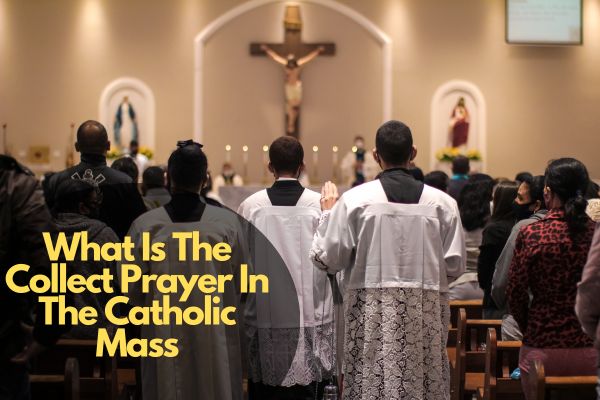The Catholic Mass is a rich pattern with many aspects that add to its beauty, solemnity, and spiritual depth. Among these is the Collect Prayer, a major and meticulously prepared prayer that takes center stage in the liturgy. The Collect Prayer, sometimes read by the priest or presider, is a significant moment of focused prayer, bringing the faithful’s aspirations together and establishing the tone for the whole Mass.
In this article “What is the Collect Prayer in the Catholic Mass?”, we’ll look at the meaning and structure of the Collect Prayer in the Catholic Mass. We’ll look at its beginnings and how it evolved throughout centuries of liturgical growth. We will also look at the aspects that make up the Collect Prayer, including its distinctive structure and significance within the Mass.
What Is The Collect Prayer In The Catholic Mass?
The Collect Prayer, also known as the Opening Prayer, is an essential part of the Catholic Mass. It typically occurs at the beginning of the Liturgy of the Word, following the Penitential Act or the Kyrie (Lord, have mercy). The Collect is a concise, focused prayer that gathers the intentions of the congregation and sets the tone for the specific liturgical season or occasion.
The priest, acting as the voice of the assembly, offers the Collect on behalf of the people present. The prayer usually addresses God, acknowledging a particular aspect of God’s nature or recalling an event from salvation history. It concludes with a request or petition related to the themes of the Mass or the liturgical season.
The term “Collect” is derived from the Latin word “collecta,” meaning “gathered.” In this prayer, the faithful are symbolically gathering their intentions, concerns, and praises before presenting them to God. The Collect is a unifying moment that reflects the shared identity and purpose of the worshipping community.
Conclusion
The Catholic Mass is not merely a religious ritual but a profound encounter with the divine. The Collect Prayer in the Catholic Mass is a sacred moment that gathers the intentions and petitions of the faithful, offering them as a unified plea to God. It shapes the liturgical celebration, connecting the scripture readings with the Eucharistic action and fostering a sense of unity among the assembly.
Through its concise yet profound structure, the Collect Prayer invites the faithful to encounter the divine and express their deepest desires, seeking God’s grace, mercy, and guidance. As the faithful participate in the Mass, may the Collect Prayer serve as a reminder of their communal voice, their shared journey of faith, and their unwavering trust in the providence of God.






